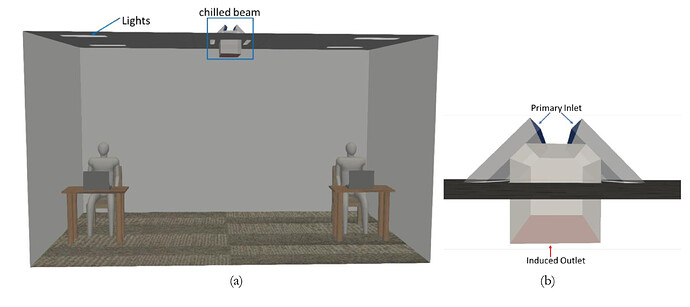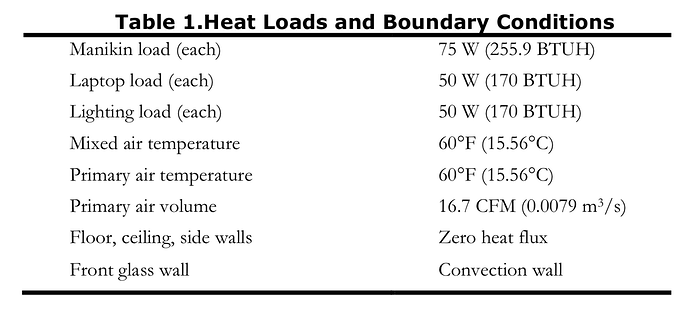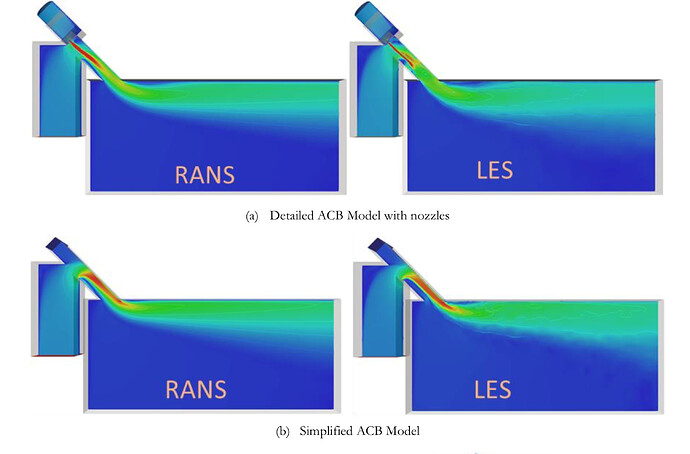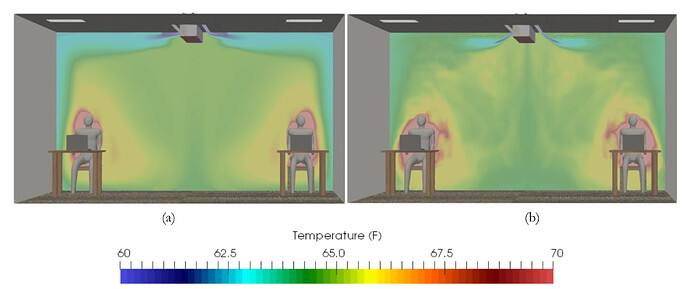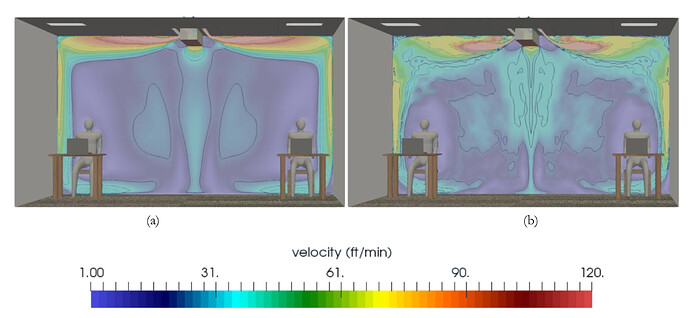\underline{\textbf{Status}}
Not started yet.
\underline{\textbf{Description & Overview}}
The project including two models can be viewed here: SimScale
The design optimization of an active chilled beam is difficult to achieve with conventional one-dimensional calculations, and performing experimental tests for many design variables is cost-prohibitive. Computational fluid dynamics (CFD) offers cost-effective and accurate design optimization tool for active chilled beam systems. One critical limitation of using CFD is employing empirical turbulence modeling approach like one-equation or two-equation Reynolds-averaged Navier-Stokes (RANS).
Large eddy simulation (LES), with proper flow-resolving computational grids, can provide more accurate prediction of flow distribution in such scenarios.
In the present case, the user should carry out a high fidelity large eddy simulation to analyze active chilled beam design for a typical office space application. The computational modeling approach is first validated with available experimental data. The limitation of two-equation RANS modeling approach is illustrated by comparing results with LES and published experimental data. The CFD model includes buoyancy, and typical heat loads for manikins, laptops, lights etc. Several CFD modeling scenarios are created and simulations performed for understanding the impact of assumptions on results.
Finally, flow structures should be analyzed to assess the cooling performance in built environment using active chilled beams, based on metrics like thermal comfort and draft risk. The induction ratio (IR) was accurately predicted by LES while RANS predicted IR within 8% error, when compared to experimental data. LES model captured the detailed flow structures and jet width relatively better. Results also confirmed draftless cooling of the office space.
\underline{\textbf{Input Data}}
Fig.1 (a) CAD model of office (b) Zoomed View of Active Chilled Beam
\underline{\textbf{Purpose}}
The purpose of this project is to validate the accuracy of the solver for indoor convective heat transfer. The velocity and temperature contours are to be compared with the proposed results.
\underline{\textbf{Pictures of validations}}
\underline{\textbf{Pictures of validations - Office Model}}
\underline{\textbf{Key Words}}
Computational fluid dynamics, CFD, Large Eddy Simulation (LES), Reynolds Averaged Navier-Stokes (RANS), Mathematical models, Indoor environment, Office spaces, Thermal comfort, Active chilled beam
\underline{\textbf{Literature & Sources}}
Big thanks to @akarimi for providing me the models for this “Solve it with SimScale” case.
Status
Not started yet.
